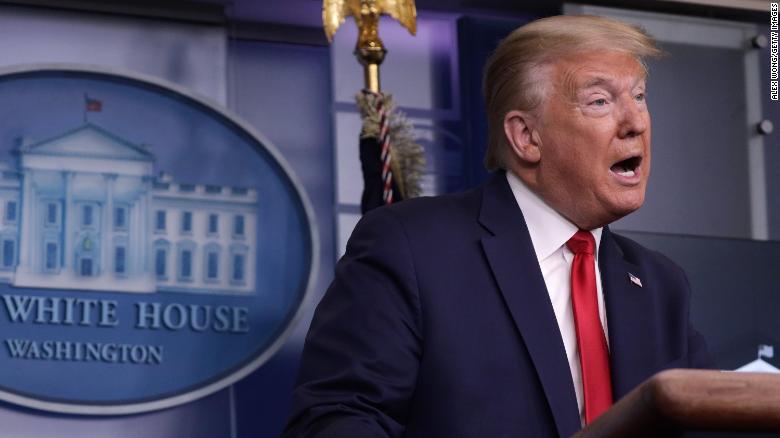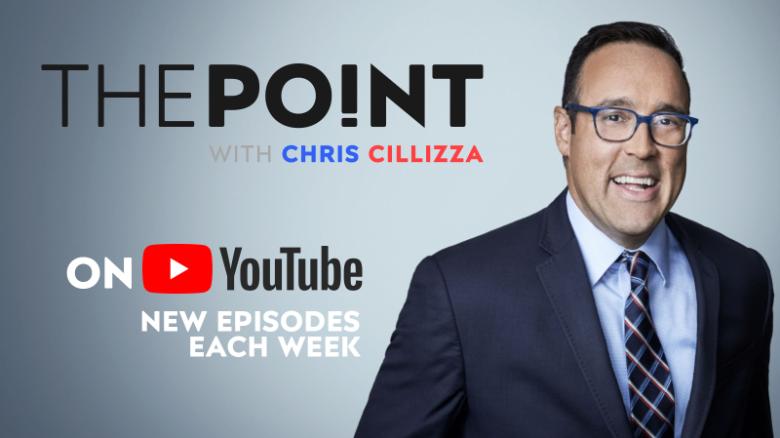(CNN)On Tuesday afternoon, Twitter tried to strike a blow for truth.
On one of President Donald Trump's many misleading tweets about mail-in balloting, the social media company added a small tag that read: "Get the facts about mail-in ballots." Click the link and it takes you to a Twitter page with facts about mail-in balloting -- it is not "rigged" as Trump suggests -- provided by mainstream media outlets.
The move by Twitter came after considerable public pressure for it to take action against Trump for a string of vile tweets suggesting that former Florida Rep. Joe Scarborough was involved in the death of a former aide in 2001. (He was not.)
It's a baby step for the social media giant against the torrent of misinformation spewed by this President on its platform. It also won't work.
Here's why:
1) Trump's megaphone is simply too big. Twitter isn't going to remove Trump's account. Which means that he can use the platform Twitter affords him to savage, well, Twitter. He's already doing it.
".@Twitter is now interfering in the 2020 Presidential Election," Trump tweeted Tuesday afternoon. "They are saying my statement on Mail-In Ballots, which will lead to massive corruption and fraud, is incorrect, based on fact-checking by Fake News CNN and the Amazon Washington Post. Twitter is completely stifling FREE SPEECH, and I, as President, will not allow it to happen!"
On Wednesday morning, Trump upped the ante -- suggesting he would (and could) shut down social media sites. "Republicans feel that Social Media Platforms totally silence conservatives voices," Trump tweeted. "We will strongly regulate, or close them down, before we can ever allow this to happen. We saw what they attempted to do, and failed, in 2016. We can't let a more sophisticated version of that happen again."
Then he added, "Twitter has now shown that everything we have been saying about them (and their other compatriots) is correct. Big action to follow!" (It's not entirely clear how Trump would single-handedly regulate or shut down social media companies.)
Many people -- especially Trump supporters -- will never even go to Twitter to see the tag that the site has appended to Trump's tweets. Instead, they'll get the news straight from the President and not feel the need to seek out any more information.
2) The Twitter tag is too small. Yes, Twitter did something in response to long-standing criticism that it is allowing the President of the United States push falsehoods to his 70+ million followers. But a small tag appended to a Trump tweet that urges people to "get the facts" is the equivalent of an ant biting an elephant. The elephant doesn't even notice. The only way that Twitter could truly impact Trump is to suspend his account, robbing him of his preferred megaphone. And the site has made very clear they have no plans to do that -- under the aegis of protecting 1st Amendment rights. Short of that -- admittedly drastic -- step, it's hard to see how anything Twitter does (including the tag) will have any real impact.
3) Twitter is damaged goods. Trump and his fellow conservative allies have been insisting for years that Twitter, Facebook and the rest are biased against conservatives. That conservative accounts are taken down, muted or disappeared. That the Silicon Valley founders of these social media giants are all liberals and are finding ways small and large to promote views they agree with and to silence those they don't.
For Trump backers, then, this attempt by Twitter to put people to facts when the President has made a false claim isn't a good faith effort. Instead it's simply the latest example of how conservatives are being unfairly treated, and how liberals get away with things they never could.
And it's not just about conservative distrust for Twitter. it's about Twitter -- and social media platforms -- more broadly. They have grown so big so fast and with so few rules that it may be too late to close this Pandora's box.
Charlie Warzel, who writes about the Internet and social media for The New York Times, explained this realty well in a series of tweets Tuesday night. He wrote:
"I'm at the point on all this where I don't even know what I think. Is this a good solution? maybe? Probably not? 'Get the facts' has some real Biden energy. Is it too late to try to establish some guard rails on this site? Probably yes. Should they? Maybe. Slippery Slope? Idk!...
"...My feeling on these platforms is that they're failed states, mostly. Architecture/reach for scale feel like the prob[lem]. Which requires massive overhaul, not margins tinkering. So it's difficult to have a clear critique of potential solutions when [you] just think we'd be better off [without]"
4. Trump cares deeply about cultivating his social media following, and using its instant-response mechanisms as a way to gauge public sentiment. How much does he care about it? Within 24 hours of Twitter adding a fact check to one of his tweets, Trump had issued an Executive Order seeking to combat the move. Compare that quick-twitch reaction with Trump's decision to ignore warnings about the growing coronavirus threat for months, and you see very clearly how much he cares about Twitter.
The point here is that Twitter, for a lot of reasons -- some of which are its fault and some of which aren't -- has no chance in a fight over facts and truth with Trump. Unless they are willing to use the nuclear option of suspending him from the site, which brings its own massive set of complicated questions -- and is not a sure-fire solution anyway.
In short: We're too far along the road with these social-media companies to turn around and go back to the beginning. Cosmetic changes to satisfy PR concerns won't do it. Trump is a creation, at least in part, of the outrage machine that Twitter helped build. And they can't turn it off now -- even if they wanted to.






